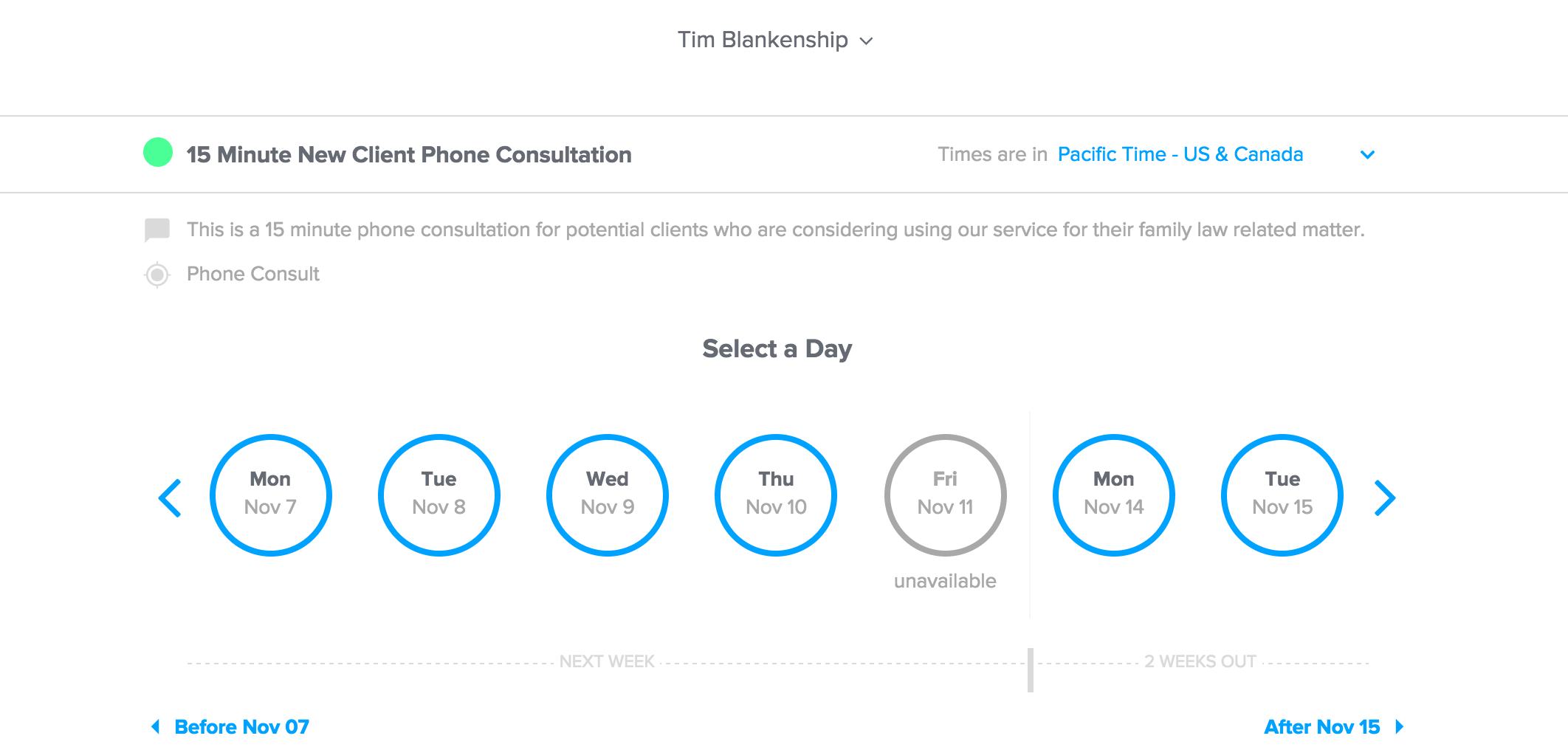
3 Ways Attorneys Should Be Using Their Calendars
08/23/2018 By Bill4Time Staff

What’s the best part about having a specialized attorney calendar?
Not using it! It’s a feeling many attorneys seem to share in the legal world. Their attorneys calendars aren’t performing the way they need them to. Instead of creating freedom, structure and control, calendars restrict it.
It’s not your calendar’s fault.
When calendars are misused they become restrictive. They force you to spend most of your time doing what you have to do instead of the things you actually want to do.
What if it didn’t?
What if your calendar gave you more freedom?
It will.
If you take control of how it’s used.
Why bother?
Because you’d able to create the kind of work day you actually want. One where you’re making things happen instead of letting things happen to you.
Curious?
Here are a few ways you can take control of your calendar and change your work day for the better.
Tip #1: Let other people add to your calendar
We waste a tremendous amount of time on scheduling meetings and events. We go back and forth, discussing the minutia of scheduling a meeting.
It’s exhausting.
A better idea? Let your co-workers and clients add themselves to your calendar. With the right approach you’re able to offer a controlled decision to those around you. You’re creating favorable options, but they’re required to choose from the options you provide.
Choose this or that.
Asking clients “do you want to meet on Tuesday or Wednesday” gives respondents a choice. But you’re making one first. You’re saying every other day of the week is unavailable.
All without explaining yourself.
An easy way to do this?
You use Calendly. Calendly gives you the ability to set the terms and conditions of your availability. You’re able to provide a specific block of time, on specific days, for a specific purpose. Here’s how attorney Tim Blankenship does it.

And the best part?
It integrates with Outlook. No more wasting time on back and forth emails. Just send out a Calendly link and have respondents choose a time.
It’s that easy.
Tip #2: Reject calendar items aggressively
Some clients don’t have boundaries.
Co-workers aren’t always the best at respecting your time. You’ll need to reject the items that violate your boundaries and restrict your freedom.
But how?
Clients and partners don’t like hearing the word “No.”
So what do you do?
You add two ingredients to your No. Penalties to the asker and clarity on the “why.” Here’s what that looks like.
- “I’m working on X; If I drop that and focus on Y, we may fall behind on Z.”
- “X could be a major barrier here. Would you give me [a week] to figure things out?”
- “Anne is a specialist with X. She recently achieved Y. Can I introduce both of you?”
- “I’m in the middle of a project right now. The deadline for that is today. Can we reschedule for next week?”
Did you catch that?
The word “No” isn’t listed here at all. You’ve just given clients and co-workers a compelling reason to accept your No. A painful consequence they’d like to avoid and a compelling “why” that allows them to save face.
One last thing.
Be kind. Give people the chance to swallow your rejection with dignity. Make every reasonable attempt to work with those around you. When you can’t, be gracious.
Tip #3: Accomplish big things with structured procrastination
We’re all under pressure.
Our co-workers and clients are under a tremendous amount of pressure to perform. When they find out your calendar is open they’re going to come running. They’re going to try to fill your calendar with their problems.
Don’t let them do it.
Your ability to meet your personal and professional goals depends on it.
Use structured procrastination instead.
Robert Benchley refers to structured procrastination as a tool that’s used to convert an unpleasant habit into an exceedingly powerful strength. He describes it as a tool…
“..that converts procrastinators into effective human beings, respected and admired for all that they can accomplish and the good use they make of time.
All procrastinators put off things they have to do. Structured procrastination is the art of making this bad trait work for you. The key idea is that procrastinating does not mean doing absolutely nothing. Procrastinators seldom do absolutely nothing; they do marginally useful things, like gardening or sharpening pencils or making a diagram of how they will reorganize their files when they get around to it.
Why does the procrastinator do these things? Because they are a way of not doing something more important. If all the procrastinator had left to do was to sharpen some pencils, no force on earth could get him do it. However, the procrastinator can be motivated to do difficult, timely and important tasks, as long as these tasks are a way of not doing something more important.”
That’s it then.
When your co-workers try to fill your open schedule with their problems, use structured procrastination. When you find yourself procrastinating, neglecting to do the things you know you should do stop fighting it. There’s a better way.
Go with it.
Use your calendar to schedule alternate tasks. If you’re human, you struggle with procrastination from time to time. If you’ve tried to overcome procrastination and can’t seem to push through, go with it.
Schedule something else.
Add an alternate or tangentially related item to your calendar. Do that repeatedly and you’ll begin to accomplish amazing things.
The best part about having a calendar?
It’s freedom.
Freedom to focus your time and attention on the details that matter most to you. Sometimes you’re not able to do that, but that doesn’t mean you have to relinquish control over your calendar.
Your calendar gives you freedom…
If it’s treated with care and handled properly. Your calendar isn’t supposed to be restrictive. It’s supposed to be empowering. A helpful tool that enables you to maximize your time. So you have more time to do the things you want to do.
Freedom. It’s the best part about having a calendar. Take control of your calendar and that freedom is yours.




